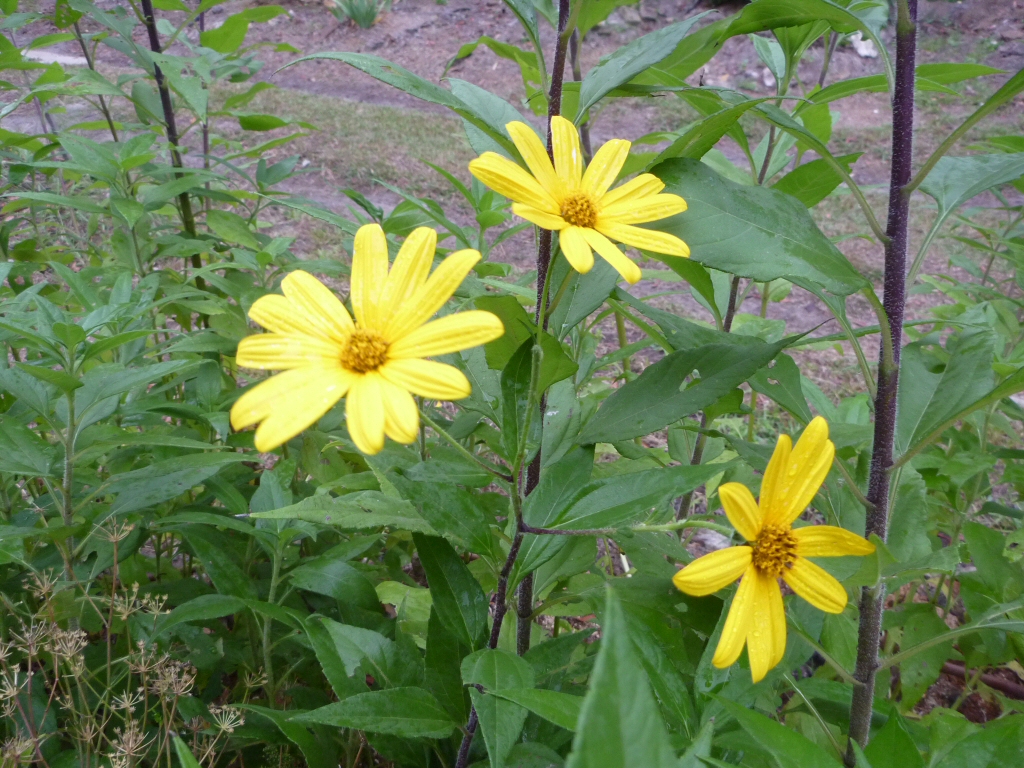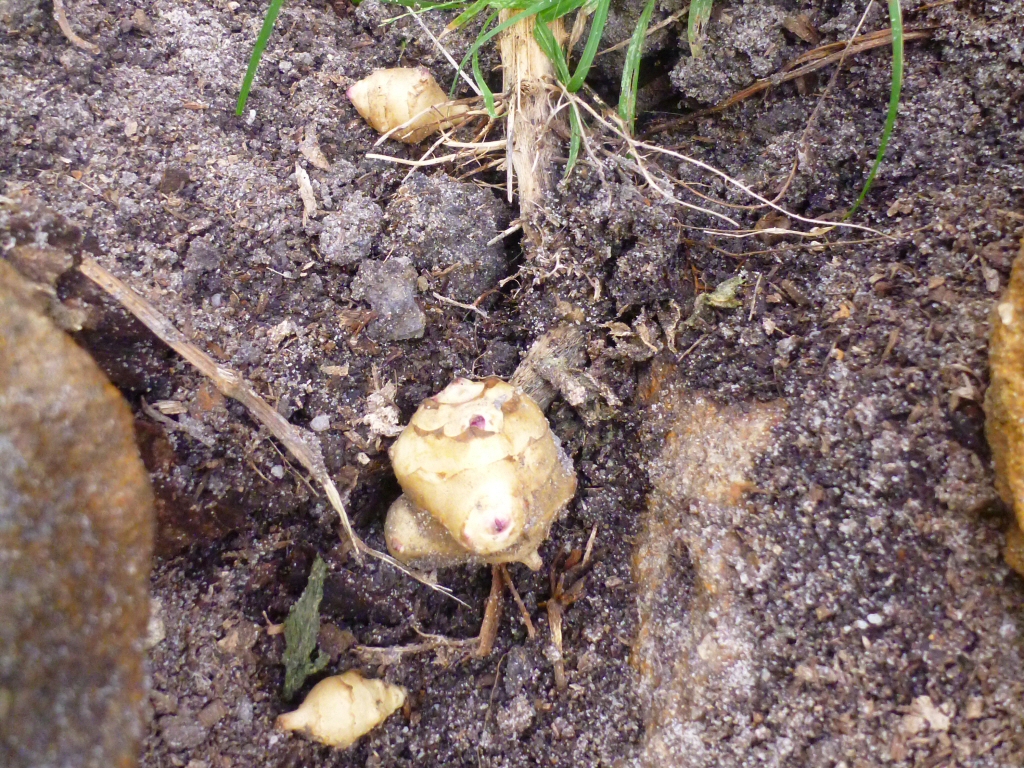Helianthus Tuberosus – Jerusalem Artichoke, Sunroot, Topinambour
The Jerusalem Artichoke is a fast growing perennial, producing bright yellow daisy-like flowers in Autumn. It is closely related to the Sunflower, and quite similar in appearance. Grown for its edible tuber, it is a root vegetable similar in flavour and texture to potatoes or water chestnuts. Despite it’s name the Jerusalem Artichoke or Sunroot bears no relation to the Globe Artichoke, and is actually native to North America, where it was cultivated as a food plant by North American Indians.
-

Helianthus tuberosus - Jerusalem artichoke
-

Helianthus tuberosus - Jerusalem artichoke tubers
-

Helianthus tuberosus - Jerusalem artichoke tuber ready to plant
The Jerusalem Artichoke is a vigorous and hardy plant, requiring little maintenance, it will grow in most soil types, growing best in fertile, sandy soils. It is also frost hardy, generally free of pests and disease. It will thrive in sunny dry positions, but will grow happily in partial shade.
The best time to plant is early Spring. It is easily grown from small pieces of the tuber. Plant these in pots or straight into the garden, about 10cm deep, and 25cm apart. Care should be taken when positioning as the tubers will multiply quickly, and flower stems can reach up to 3m tall, which means they can outcompete surrounding plants. The best time to harvest is late Autumn, simply dig out the tubers after the flowers and stems have died back. Any small pieces left in the ground will sprout next Spring, and can be left to continue the patch, or carefully removed. Jerusalem Artichokes are best fresh, and should be treated much like ginger root. If they are growing in a well drained soil they can be left in the ground and harvested as required, this is ideal, however a good alternative is to store them in sand or in the refrigerator. Jerusalem Artichoke has a delicate nutty flavour and can be prepared in many different ways. It is perhaps the most versatile root vegetable, and can be used as a substitute for potatoes in most dishes, or raw and sliced thinly to provide sweetness and texture to a salad.
Have a look at Angus’s video on Jerusalem artichoke.
